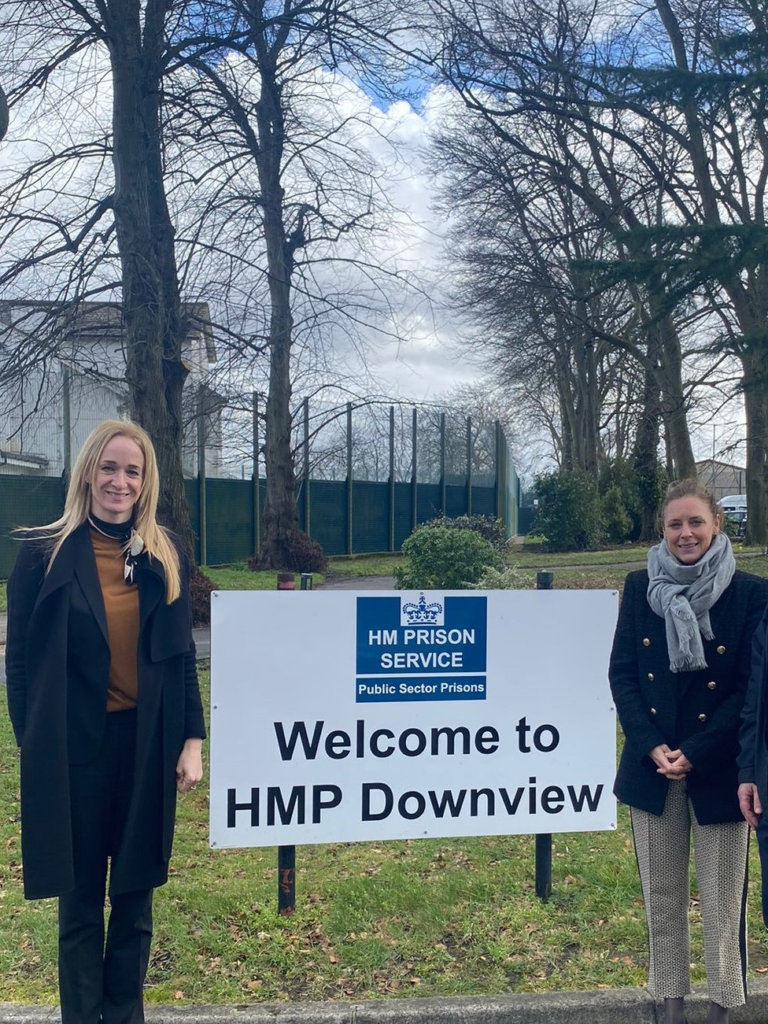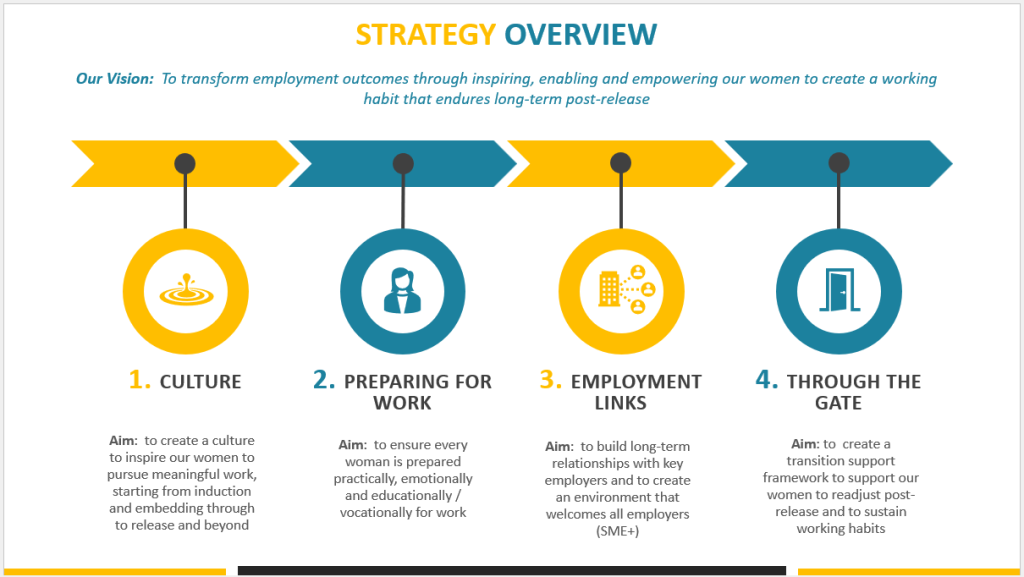Joanna Graham reflects on her journey to becoming Chair of the Employment Advisory Board at HMP Downview, getting to understand the needs of the women there, and developing a strategy for supporting them into employment.

Getting involved
It’s not every day that James Timpson phones to ask for a favour, especially one so daunting: would I oversee and improve employment outcomes at a women’s prison in Surrey, as Chair of an Employment Advisory Board (EAB)?
I had absolutely no experience of prisons and knew nothing about rehabilitation or reoffending. I had spent the last fifteen years building up my car wash business to two hundred and eighty franchised outlets, whilst campaigning for improved industry standards and regulation of our sector. I have always been passionate about protecting workers’ rights and supporting women’s economic and job opportunities.
Needless to say, it didn’t take long for James to convince me to say yes. He was right: this work is compelling and entirely absorbing.
Understanding the women’s needs
The journey began by understanding the women’s population at HMP Downview, which hosts women serving time for all types of crime and allows risk-assessed women to leave the prison each day to work on temporary licence.
It was clear that there would not be a quick fix to improving employment outcomes. Many of the women have very poor numeracy and literacy skills when entering Downview. Although this usually improves during their sentence, it can be a barrier to finding work especially work that is interesting, better paid and therefore likely to last longer.
Most of our women also have complex needs, including around their mental health, related to substance misuse, and in their personal relationships and family circumstances.
Employment outcomes will not change unless we address and accommodate these pressures. It’s important we do this to support women into suitable work – not just part-time, low-paid, unskilled labour.
Creating our strategy
The importance of hopes and dreams has formed the cornerstone of my employment strategy for Downview.
Let’s take Maddie* who had nearly a year left to serve. She told me:
Maddie had a dream which the Downview team nurtured and converted to a career reality. This dream could provide the key to a different future for her and her family.

Our strategy is focussed on:
- Inspiring – we must find what motivates our women and give them the confidence to believe they can live a different life post-release, through providing access to employers and volunteers who will lead workshops, seminars, training and mentoring
- Upskilling – we need to give them the skills and access to education and support that may have been unavailable to them pre-prison
- Celebrating – through recognising learning and celebrating achievements , to encourage personal development and to broaden horizons
- Supporting long-lasting employment – this will continue “through the gates”, helping our women to readjust to society post-release through mentoring and support
Effort and determination
Changing habits, nurturing ambition and reshaping futures will take time and effort, as well as resilience when we encounter the inevitable setbacks. There are many more Maddie’s who want to change their lives, and by doing so we will be helping to protect their communities. As EAB Chair, I am privileged to give my time to help them.
It was great to be part of the Women’s Estate EAB Conference earlier this month. The current data reflects the need for a female orientated employment conference as in 2021 – 2022, women leaving prison had an employment rate of 5.3% after six weeks compared to 13.6% for men, and 7.7% after six months compared to 18.0% for men. HMPPS staff, employers and voluntary organisations joined forces in the hope improve employment outcomes for women leaving prison.
By Joanna Graham, Employment Advisory Board Chair and CEO, Waves and Gilmore Group
*Names have been changed for confidentiality purposes.
